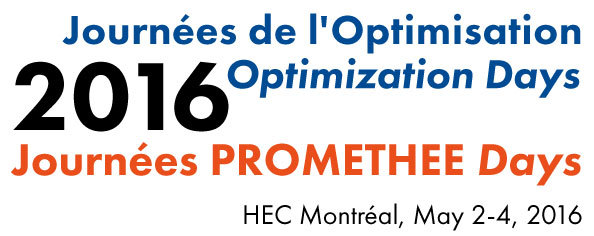
2016 Optimization Days
HEC Montréal, Québec, Canada, 2 — 4 May 2016

TA6 Dynamic Optimization in Finance
May 3, 2016 10:30 AM – 12:10 PM
Location: CPA du Québec
3 Presentations
-
 10:30 AM - 10:55 AM
10:30 AM - 10:55 AMThe short traders' delivery behavior in the U.S. T-Bond Futures market
We analyze the short traders' delivery behavior in the U.S. T-Bond Market with respect to the optimal delivery strategy, computed using a coupled Dynamic Programming/fixed point procedure. We find that bond traders are generally using a sub-optimal strategy and we evaluate, using historical data, the losses incurred over the last three decades.
-
 10:55 AM - 11:20 AM
10:55 AM - 11:20 AMOptimal dividend and capital injection policy with external audit
We solve an optimal dividend and capital injection policy for a firm that is periodically audited when its cash flow reserves fall below a certain level. When it gets audited, the firm has a given grace period during which it must inject capital in order to become solvent again. We solve this problem by characterizing as the unique viscosity solution of an associated Hamilton-Jacobi-Bellman equation. We provide numerical results to illustrate the optimal strategy.
-
 11:20 AM - 11:45 AM
11:20 AM - 11:45 AMDynamic programming and parallel computing for valuing two-dimensional American-style options
We use dynamic programming coupled with finite elements for valuing two-dimensional American-style options. In conjunction, we use parallel computing at each step of the recursion to accelerate our procedure. Our model is flexible for it accommodates all derivative contracts signed on two underlying assets that move according to a lognormal vector process. Our numerical experiments show convergence and efficiency, which puts forward our method as a viable alternative to traditional methodologies based on Monte Carlo simulation, trees, and finite differences.
